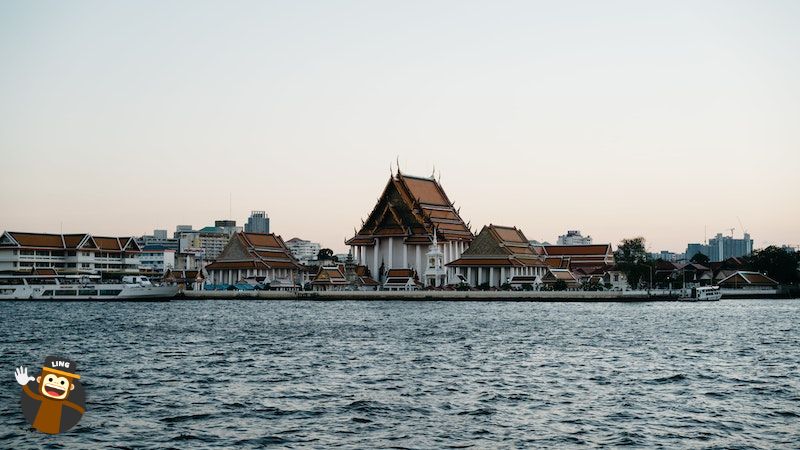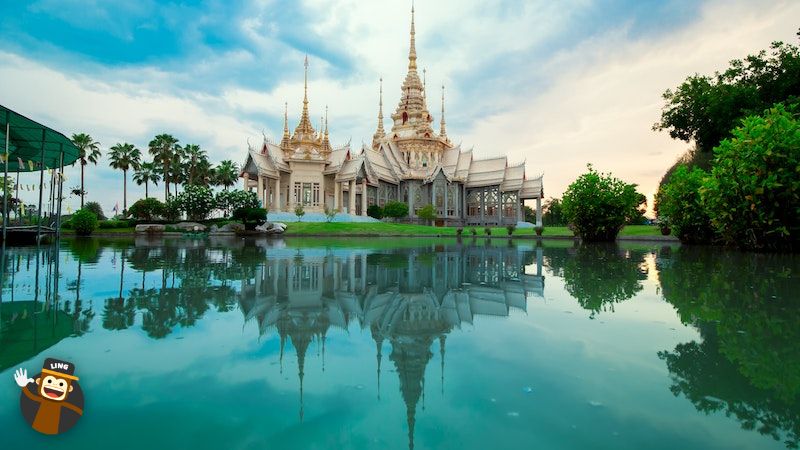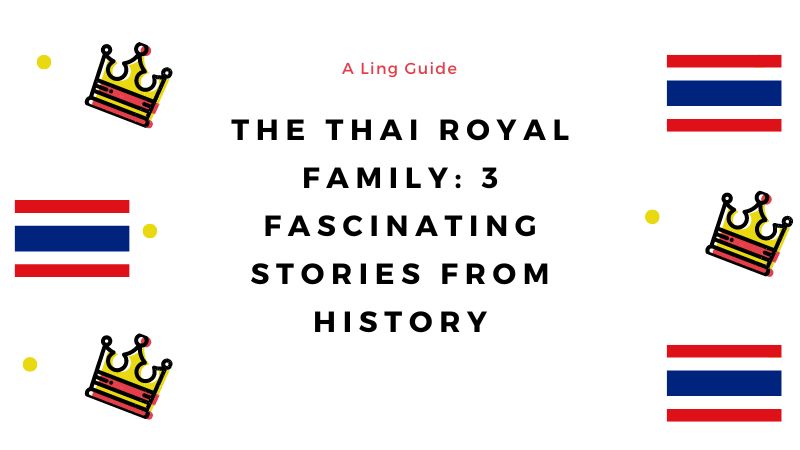The Thai royal family is an intriguing institution to explore. As a Brit, my first port of call was to consider the similarities between the Thai and British monarchies. The most striking is ‘trooping the color’ when the Thai royal guard parades in the Royal Plaza in Bangkok. The uniforms they wear are almost identical to the British royal guards, even down to the bearskin hats, although I imagine it’s a lot harder to wear one in 35 degree Celsius heat!
Before we get on with the article, let me explain a little about Ling– the gold standard of language learning apps. The founders of Ling had a simple goal- to create an app that combined the best features of Duolingo and Babbel but for a lesser spoken language such as Thai.
With the success of Ling Thailand, the company expanded to include 60+ other languages. There are a few of the big boys in there, like Mandarin and Spanish, but for the most part, you’ll find curious smaller languages like Khmer and Lao – both neighbors of Thailand.
Thai Royal Family: 3 Revered Figures From History
Often with these sorts of lists, you’ll find table after table of lineages, but I thought it might be more fun to explore some of the most interesting leaders from the past.
Note: The current royal house has the moniker, King Rama. Any King will be known as his majesty King Rama + a number.
King Mongkut (KING RAMA IX) 1804-1868
Most Western people’s first exposure to the Thai King Mongkut would be his portrayal in the super successful film The King and I. (There was also a version in the 1990s called Anna and the King starring Jodie Foster, but it’s way less successful than the predecessor).
Both of these films are banned in Thailand, and it’s easy to see why when you consider the content. In the first film, Mongkut is portrayed by heavily made-up Yul Brenner, an actor who hails from Vladivostok, Russia. In the second film, Mongkut is played by Chow-Yun Fat from Hong Kong.
However, casting is the least of these films’ problems. The historical inaccuracies in both movies is stark. The source material is from an English writer, Anna Leonowens, who traveled to Siam in the 1860s. Modern scholars rate her writings as highly dubious, with King Bhumibol saying that at best, only 10% of what was said about Mongkut was accurate.
For Thai people, Mongkut is seen as the great reformer. Perhaps much of this maturity could come from the fact that he didn’t take the throne until he was 47 and had already spent 27 years of his life in a Buddhist monastery.
Mongkut was somewhat of a polymath who spoke three languages and studied western astronomy. He established several innovative social policies, including reforming the army and giving women more rights.
Queen Sunanda (1860-1880)
The first time I heard a telling of Queen Sunanda’s story, I was stunned.
Sunanda was the first wife of King Chulalongkorn (King Rama IV). On the 31st of May, 1880, the young queen, only 20 at the time, was traveling to Bang Pa-In, the royal family’s summer residence. Sunanda was pregnant and also with her one-year-old daughter, Princess Kannabhorn.

Sunanda and the young princess were being rowed to a central barge in the middle of the Chao Phraya river when disaster struck. The waters were unusually choppy, and the boat capsized, tossing both royals into the churning waters.
It is this point in the story where I first found an interest because one account I read said that of all the hundreds of guardsmen that accompanied, not one dived into the water to help. This was because Sunanda and her daughter, members of the Thai royal family, were perceived as divine, and it was strictly forbidden to touch someone who was part-deity. Without help, both royals drowned.
However, since then, I’ve read other accounts, notably from the King’s diary, that say guardsmen actually did dive into the water, pull them to shore, and try to resuscitate them in vain.
Whatever version you believe, so devastated was King Chulalongkorn that funeral preparations went on for ten months.
King Bhumibol Adulyadej (King Rama IX) (1927- 2016)
King Bhumibol was the King on the throne when I first visited in 2014. (He passed away in 2016 as the world’s longest reigning monarch ). It is difficult to say anything original about this great leader, and even now, talking to Thai friends; they still tear up when his name is mentioned.
There are countless articles about the man and the reverence he instills in people, but what particularly impressed me was his commitment to the hill tribes in the north around Chiang Mai.
It is easy to forget just how far Northern Thailand is from Thailand’s grand palace, but Bhumibol was desperate to do something for the previously neglected people.

During a visit to Doi Pui in 1969, he noticed that the local farmers were utterly reliant on opium sales. Opium is destructive both to the land and the social fabric of society.
Now, in Northern Thailand, there are 38 development centers that promote the growth of temperate fruits such as strawberries. In fact, if you drive around Chiang Mai, you will find many sellers on the side of the road.
Learn Thai With Ling
We hope you enjoyed this article on the Thai royal family. The Thai monarchy is endlessly fascinating. We didn’t even get the chance to discuss the majesty of the royal palace or some other notable figures such as King Maha Vajiralongkorn and Queen Sirikit. If you’d like more, let us know.
Don’t forget to download Ling if you’re keen on learning the Thai language. Reading about the royal family is much more interesting when you can do it in Thai. A lot of prime sources are written in that language.
This blog is updated weekly and our two most popular recently have been 6 best universities in Thailand for international students and plan a trip to Thailand.
Thanks for reading, and we’ll see you next time






































